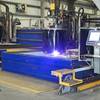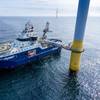Editor's Note
While the marine business continues to be characterized as one that is conservative in regards to the technology it incorporates, I strongly disagree. A read through this edition, in fact, illustrates many examples of how advanced technology is shaping and re-shaping the industry every day. Starting with the Gulf of Mexico Offshore Report, it is no small issue that the latest round of good business prospects is being driven by and supported with advanced technology, from the ability to discover and recover resources in increasingly deeper waters, to the ability to place production facilities on station and seamlessly transport the product back to shore. The Diesel Power Annual starts with a report from Alan Haig-Brown on how a small company — Westar Marine — is capitalizing on California’s Carl Moyer Program to re-power its fleet of 14 vessels, reducing NOx and improving performance. Advances in propulsion, however, is not limited to the diesel engine realm, as David Tinsley reports — on the tremendous headway being made with the increasing variety of podded propulsion systems available today. Though there have been a few well-reported technical glitches with some systems, it is widely agreed that the operational advantages — which include unparalleled maneuverability, increased propulsion efficiency and improved safety — will ensure the product’s viability in a wide range of marine applications.
The U.S. demand for some of the most technologically advanced commercial vessels afloat — LNG carriers — is set to take off, if results of a recent Lloyd’s Register survey are complete.
There is a small news item, received at press time, which says that up to 75 new LNG carriers could be needed for U.S. operation in the next decade. This report — which will be expanded upon in the August edition — follows on our June World Yearbook report (“Frozen Gas Market Heats Up,” page 50, June 2001).










